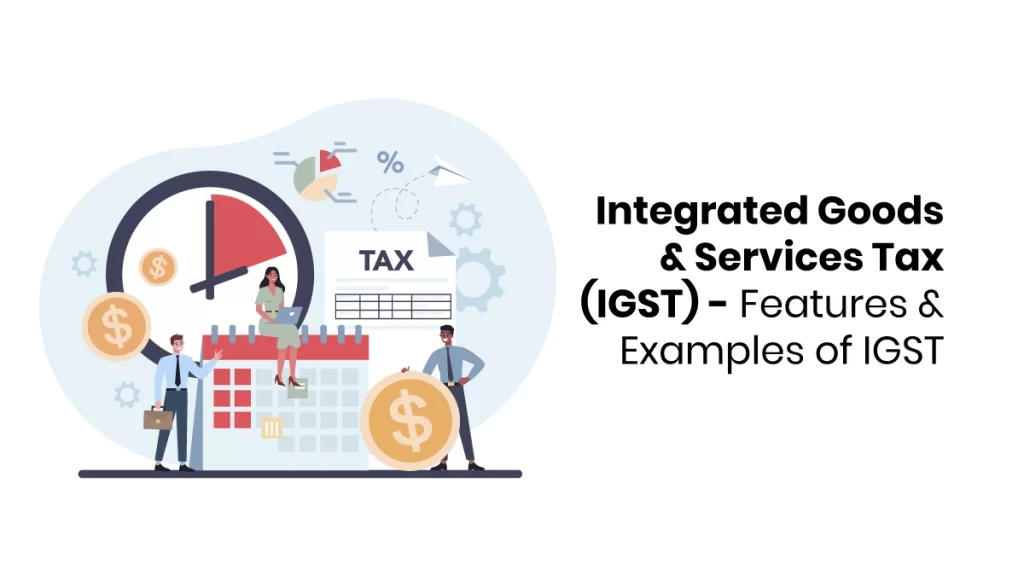The IGST, which stands for Integrated Goods and Services Tax under GST law, is governed by the IGST Act of 2017. The IGST Act clearly outlines that the Central government is responsible for levying the IGST. This tax encompasses CGST and SGST and applies to all inter-state transactions involving taxable goods and services. It also includes provisions for the consignment or stock transfer of goods and services. In cases where a seller conducts transactions outside their state, they are liable to pay IGST based on the value addition, taking into account the available credits of IGST, CGST, and SGST from their purchases. The exporting state will then transfer the credit of SGST used for IGST payment to the Centre.
On the other hand, the importing dealer can claim credit for IGST when fulfilling their output tax obligations within their state. The Centre subsequently transfers the credit of IGST used for SGST payment to the importing state. All pertinent information is also forwarded to a Central Agency, which serves as a clearinghouse mechanism. This agency verifies the claims and informs state governments of the necessary fund transfers. The IGST system ensures a seamless flow of tax credits and revenue between the central and state governments, facilitating a robust inter-state taxation structure.
Features of IGST
- IGST, or Integrated Goods and Services Tax, is integral to the GST system.
- IGST facilitates an unbroken Input Tax Credit (ITC) chain for interstate transactions, allowing businesses to claim tax credits for their GST payments.
- Unlike some tax systems, IGST eliminates the need for upfront tax payments for interstate sellers and buyers, simplifying the process.
- IGST is non-refundable in the exporting state, ensuring a smooth flow of Input Tax Credits utilized during the tax payment.
- IGST operates as an automated monitoring system, reducing administrative burdens and enhancing efficiency.
- The system primarily involves interstate dealers and central and state governments, simplifying the tax structure.
- Dealers conducting interstate supplies are electronically registered, and email communication contributes to improved compliance.
- IGST is versatile, applying to transactions in both the “Business to Business” (B2B) and “Business to Consumer” (B2C) categories, providing comprehensive coverage.
- IGST tax revenue is equitably shared between the central and state governments in the destination (consumption) state, ensuring a balanced tax system.
- Businesses enjoy flexibility when paying IGST, as they can claim Input Tax Credit from any of the four GST categories, streamlining the process and promoting efficient tax credit utilization.
IGST on Interstate Supply of Goods or Services
While the collection of IGST falls under the purview of the central government, the revenue collected from this consumption-based tax is equally shared between the central and state governments of the destination state where the goods or services are consumed. For businesses with an annual turnover exceeding Rs. 20 lakhs, this turnover threshold applies to intrastate transactions, except in the northeastern states. Only dealers registered under the composition scheme have annual sales below Rs. 1.5 crore qualify for incentives within the state.
IGST, which stands for Integrated Goods and Services Tax, differs from earlier GST systems as it encompasses interstate and intrastate goods and services transfers. It is important to note that IGST applies to transactions involving Special Economic Zones (SEZs). Any import or export of goods or services to or from an SEZ is treated as an interstate transaction.
Under GST, all supplies are subject to tax when conducting interstate trade, irrespective of the interstate trade turnover. However, through Notification No. 10/2017 Integrated Tax dated October 13, 2017, the government has granted an exemption from registration to those making interstate supplies of taxable services with an annual aggregate turnover not exceeding Rs. 20 lakhs. This threshold is reduced to Rs. 10 lakhs for northeastern and particular category states.
Refund of IGST
IGST, which stands for Integrated Goods and Services Tax, is a tax levied on all interstate transactions of goods and services. In some situations, individuals or businesses may be qualified to assert a refund of the GST they have paid to the government. Two primary scenarios in which a GST refund can be requested are:
Foreign Visitors
Non-resident foreign visitors who have visited India for up to six months may qualify for a refund of the IGST. They can seek a refund of the IGST they paid on goods or services purchased from Indian vendors during their stay in the country.
Offset for Previously Paid Tax
Suppose an individual or business has already paid the relevant IGST under another tax category (either partially or whole). In that case, they are eligible for a refund of the previously paid amount. In such cases, refunds are provided to taxpayers who pay SGST or CGST instead of IGST. Individuals or businesses must make a fresh deposit under the appropriate tax category to claim the refund. For instance, a manufacturer who has already paid IGST when purchasing raw materials may request a refund of the same amount after paying the GST applicable to the sale of finished products. This ensures that the IGST produced earlier is not subject to double taxation.
According to GST Rules, exporters may not be eligible for a GST refund in the following scenarios:
- If an exporter has already availed of the duty drawback option for CGST, SGST, or IGST, they are generally not eligible for a GST refund. However, if they have utilized the drawback scheme specifically for essential customs duty, they can still request a refund of IGST.
- Exporters who have procured inputs at a concessional rate of 0.1% may not claim a GST refund. In such cases, exports must be carried out using Letters of Undertaking (LUT) or bonds instead of paying IGST.
- Exporters who have imported inputs under the Advance Authorization program may not be eligible for a GST refund. The Advance Authorization program allows the duty-free import of materials required for manufacturing export-oriented products. However, the finished products must once again be exported using a Letter of Undertaking (LUT) or bonds, not through the payment of IGST.
These conditions are in place to ensure that the benefits and incentives provided to exporters under various schemes are unique, preventing any unintended advantages from accruing to them. Enrolling in a GST certification course can significantly enhance your proficiency in effectively managing GST accounting software for businesses. Finprov, a reputable institute, offers a comprehensive GST certification course designed to equip learners with in-depth knowledge of GST principles and practices, all backed by real-world examples. This course is an excellent fit for graduates, Chartered Accountants, company secretaries, finance and tax professionals, and individuals seeking career opportunities in the finance and accounting sectors.
Finprov’s GST certification course covers a wide range of essential topics, including the fundamentals of GST, Input Tax Credit, Composition Scheme, GST return filing, E-way bill, Time of Supply, Place of Supply, Reverse Charge Mechanism, and more. It’s tailored to meet the learning needs of graduates and professionals looking to expand their expertise in accounting and finance. Choosing Finprov for your GST certification course allows you to access quality education and valuable, highly relevant insights in these domains.






